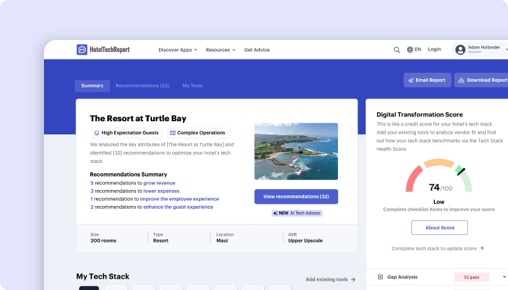Top 3 Core Objectives:
We recently undertook the massive project of updating our entire tech stack. One thing we kept a keen eye on was ensuring our various new systems (e.g., PMS, channel manager, booking engine…) integrated well with each other. Revenue Insight stood out in this regard since it connected to our PMS so seamlessly. That’s a far cry from our past set-up where disconnected systems caused a lot of friction and extra manual work. Now that’s a thing of the past and we know our data flows freely between systems without our help.
-
Understanding business performance:
Before using Business Intelligence, we handled all data collection and collation manually. That included checking competitor rates one by one as well as going through cumbersome PMS reports to understand our performance. The most time-consuming task was gathering data from multiple sources to create the in-depth Excel reports we used to evaluate our business results. Especially as a small property without a dedicated revenue manager, this time-intensive approach caused challenges. It was always a balancing act to ensure all fronts were covered and no tasks were overlooked.
-
Saving time simplifying processes:
Since we spend less time collecting and collating data, we now have more capacity to analyse and act on it. For example, Business Intelligence reveals the production of various segments, rates, room types or weekdays at the click of a button. As a result, we can quickly spot if an area is underperforming. Then, we immediately take the necessary actions to avoid losing out on business.
-
Deeper insights:
When we meet with the owner and senior management to discuss our results and strategy, we want to present our data in a clear and concise format. In the past, the only way to do that was to manually compile Excel spreadsheets from bulky PMS reports. This took a lot of time and sometimes even the most in-depth spreadsheets couldn’t provide the level of insights we wanted.



